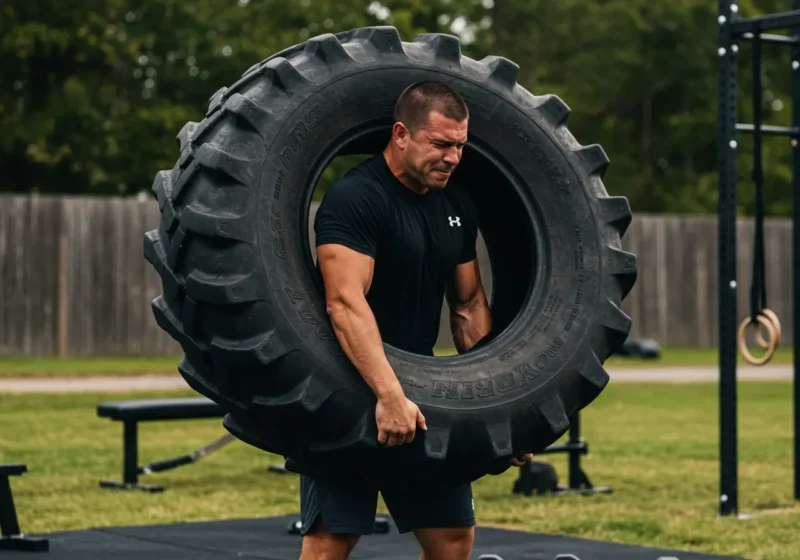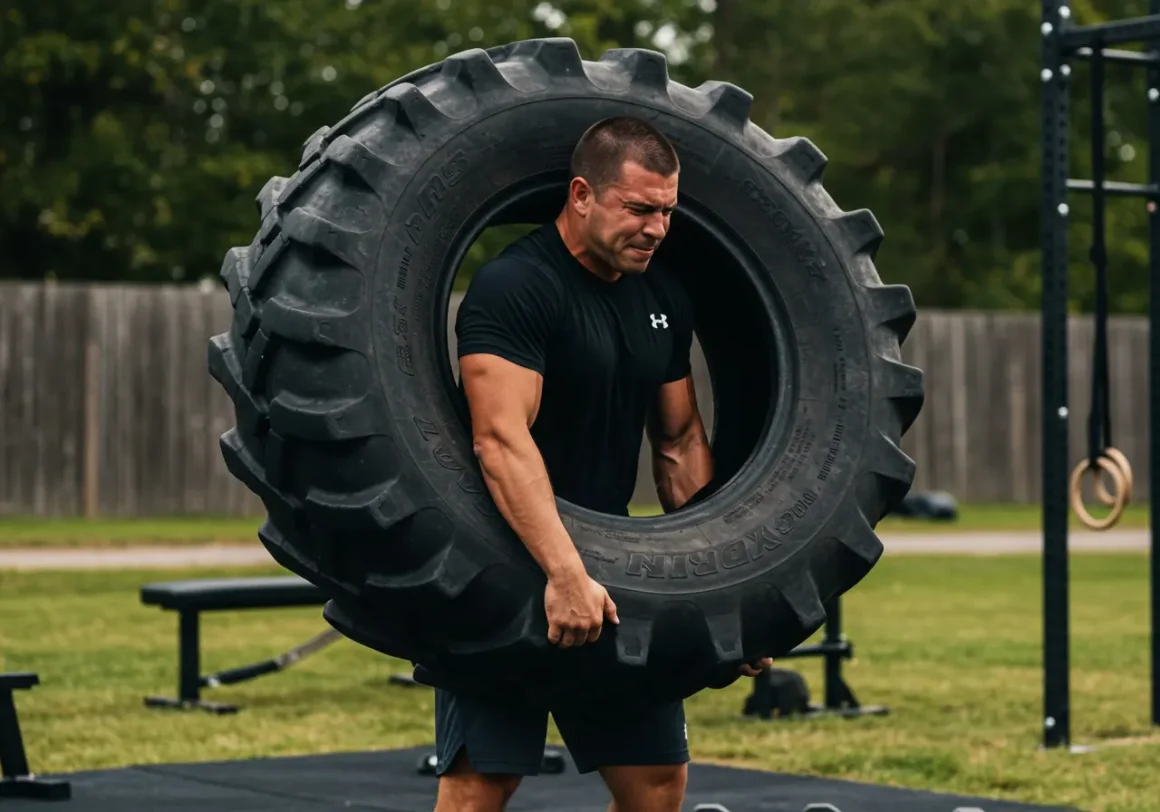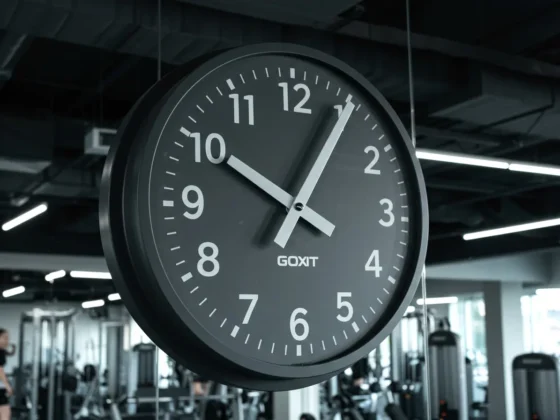Alright Fit Fellows, let’s talk about building real strength. Not just looking strong, but being strong – having that deep, practical power that comes from a body that’s truly capable and resilient. Real strength in the fitness world is a powerful blend: it’s the ability to generate significant force when you need it, coupled with the underlying structural integrity that keeps you stable and safe. It’s not just about maxing out on lifts; it’s about building a robust framework, like laying a solid foundation before you even think about adding the upper floors of a building.
Building the Foundation: Mastering the Fundamentals
Why start with the basics? Because your body is an incredible machine, designed for fundamental movements. We’re talking about squatting down to pick something up, hinging at your hips (think deadlifts or picking up a heavy box), pushing things away (like pushing a car or a heavy door), pulling things towards you (like climbing or rowing), and carrying stuff (groceries, kids, sandbags). These aren’t just exercises; they’re the movement patterns of life. Building strength here, with good form, translates directly into making everyday tasks easier and safer. More importantly, mastering these patterns creates the structural integrity – the stability in your joints, the coordination between muscles – that protects you when you do decide to push your limits. Trying to lift heavy without this foundation is like trying to build a skyscraper on sand – it’s just asking for trouble. Focus on feeling the right muscles work, connecting your mind to your body in each movement. That quality control is gold.
Here’s what that focus really means in practice:
- Form First, Always: Learn the movement pattern correctly before adding significant weight.
- Feel the Work: Pay attention to which muscles are activating. Are they the ones that should be?
- Mind-Body Connection: Don’t just go through the motions. Be present in each rep.
- Build the Base: Think of every rep as building your body’s resilient structure.
- Quality Over Quantity: A perfect rep is infinitely more valuable than a sloppy one.
Applying the Principles: Your Path to Growth
Building strength is like having an ongoing conversation with your body. You push it a little, then you listen. It responds, adapts, and gets stronger. This back-and-forth is powered by something called progressive overload. Simply put, you have to keep challenging yourself in a smart way. That could mean adding a little bit more weight, doing an extra rep or set, improving your technique to make a movement more efficient, or even decreasing the rest time between sets as you get fitter. If you keep doing the same thing, your body has no reason to change. It’s like trying to learn a new language without ever moving beyond the first chapter – you’ll stay at the beginner level forever. Progressive overload is the engine that drives adaptation and growth in strength.
So, what do you need to get started on this path? Honestly, not as much as you might think. First and foremost, you need a willingness to learn and be patient. Building strength is a journey. You also need some space to move safely. You don’t need a fancy gym membership right away. Bodyweight exercises are incredibly effective for building a strong foundation in those fundamental movements. Comfortable clothing that allows for a full range of motion is helpful. Understanding the basic mechanics of squatting, hinging, pushing, pulling, and carrying is key – even watching reliable online tutorials or getting advice from a knowledgeable friend can make a huge difference initially. And perhaps most importantly, you need consistency. Showing up, even when you don’t feel like it, is half the battle.
Alright, let’s get into the “how-to.”
- Master the Big Five: Start with bodyweight. Practice your squats (think sitting back into a chair), hinges (imagine closing a car door with your butt), push-ups (find an incline if needed – against a wall, counter, or bench), rows (use a sturdy table or chair to pull yourself up), and carries (just walk tall with something moderately heavy in each hand). Focus intensely on form. Film yourself if you can, compare it to tutorials, and make adjustments. Quality over quantity, always.
- Implement Progressive Overload Smartly: Once your form is solid, start adding challenge. For bodyweight, this might mean doing more reps, more sets, slowing down the movement, or trying harder variations (like single-leg squats eventually). If you have weights, add a small amount when you can comfortably hit the target reps with good form. Don’t add weight if your form breaks down. Listen to your body.
- Structure Your Training: You don’t need to train every day. 2-4 strength sessions per week is a great starting point. You could do full-body workouts hitting all the major patterns, or split them up (e.g., upper body one day, lower body another). Keep it simple initially. Consistency is your best friend here.
- Prioritize Recovery Like It’s Your Job: Aim for 7-9 hours of quality sleep per night. Fuel your body with nutrient-dense foods, making sure you get enough protein to help repair those muscles (think lean meats, fish, eggs, beans, lentils). Stay hydrated throughout the day. Incorporate rest days – your muscles need time off to rebuild. Active recovery like walking or gentle stretching can also help.
- Listen Critically: Learn the difference between muscle soreness (that good, worked feeling) and joint pain (the “stop doing that” signal). Don’t be afraid to take an extra rest day or modify an exercise if something doesn’t feel right. Pushing through pain is foolish, not strong.
As for tools and resources, start simple. Your body is the primary tool. Resistance bands are fantastic and versatile for adding challenge or assistance. A few dumbbells or kettlebells can go a long way. For learning form, look for reputable strength coaches online (many have great free content) or consider investing in a few sessions with a local coach. And track your progress! A simple notebook or a basic app to log your exercises, sets, reps, and weight is invaluable. It helps you see how far you’ve come and plan your next steps for progressive overload.
Ultimately, building real strength is about building a more capable, resilient you. It’s a process of consistent effort, smart progression, and honoring your body’s need for recovery. Focus on mastering those fundamental movements, patiently add challenge over time, and remember that everything you do outside the gym – how you eat, sleep, and manage stress – is just as critical as the work you do inside it. Build that solid foundation, and the strength will follow.

















